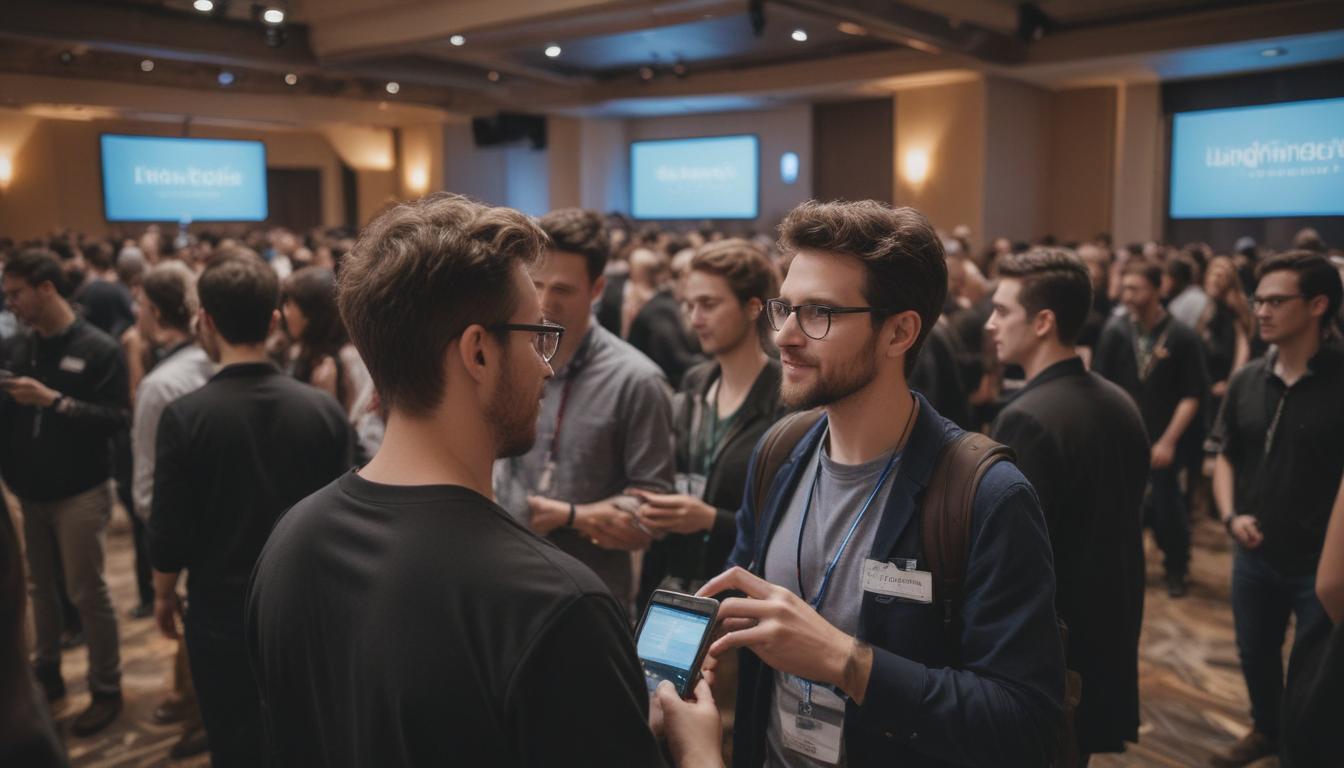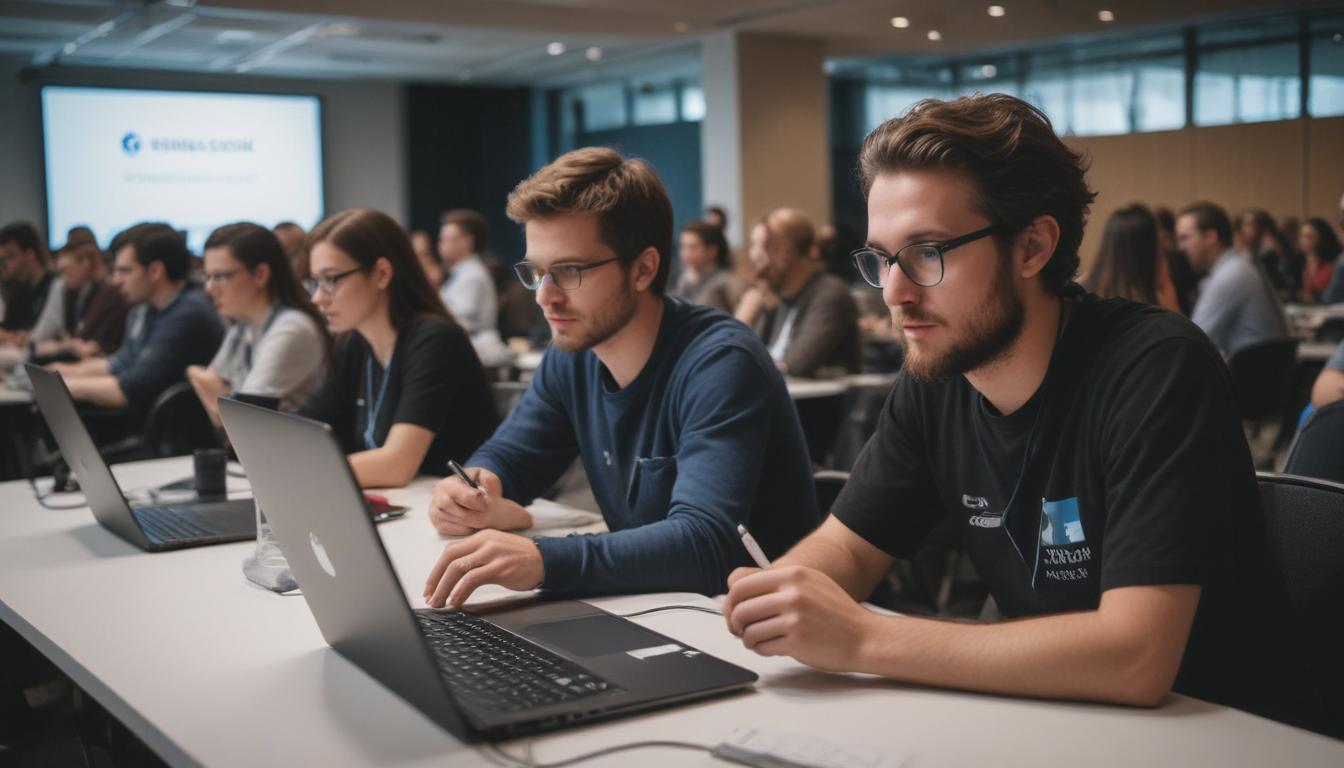Now Reading: Level Up Your Career at Tech Events
- 01
Level Up Your Career at Tech Events
Level Up Your Career at Tech Events

Unlock Your Tech Career Attending Conferences and Meetups
Do you ever feel like you are stuck in a professional bubble? You are great at your job, you write clean code, and you complete your tasks on time. But outside of your team, it feels like the tech world is moving at lightning speed, and you are worried about falling behind. The thought of networking feels daunting, and you wonder if spending time and money on a conference is even worth it. You are not alone in feeling this way, but this isolation is holding back your career potential.
The solution is to strategically engage with the tech community through conferences and meetups. These events are far more than just a collection of talks and free merchandise; they are powerful accelerators for your knowledge, network, and career. They provide a direct line to the latest industry trends, a chance to meet the people behind the technologies you use every day, and a space to forge connections that can lead to your next job, collaboration, or breakthrough idea. This guide will walk you through how to transform these events from overwhelming obligations into invaluable opportunities.
Before You Go The Art of Preparation
Attending a conference without a plan is like navigating a new city without a map. You might stumble upon something interesting, but you will likely miss the best parts and end up feeling lost. True value comes from preparation. Start by defining your goals. Why are you going? Are you hoping to learn a specific new framework, find a solution to a problem at work, meet potential mentors, or scope out new companies to work for? Write down one to three clear objectives. This focus will guide all your decisions, from which sessions you attend to who you talk to.
Once your goals are set, it is time to do your homework. Scrutinize the conference schedule and speaker list. Identify the “must-see” talks that align directly with your objectives and mark them down. Then, look for the speakers and companies that interest you most. Follow them on social media like LinkedIn or X (formerly Twitter) beforehand. This research not only helps you build a personalized agenda but also gives you context for starting conversations. Knowing a speaker’s recent project or a company’s latest product launch is a perfect icebreaker.
Crafting Your Quick Introduction
The dreaded question, “So, what do you do?” can cause even the most confident professional to stumble. Having a concise and natural introduction ready removes this anxiety. This is not a formal sales pitch but a simple, 30-second summary of who you are and why you are there. It should be authentic and open the door for a two-way conversation.
A great template is “Hi, I’m [Your Name]. I’m a [Your Role] at [Your Company], where I focus on [Your Specialization, e.g., building scalable backend systems]. I’m really excited to be here to learn more about [A Topic or Technology at the Conference].” This is clear, informative, and immediately gives the other person something to connect with. Practice saying it out loud a few times until it feels comfortable and not robotic. The goal is to start a conversation, not just broadcast your resume.
During the Event Making Every Moment Count
When you arrive at the venue, it is easy to become overwhelmed by the sheer number of people and simultaneous events. Resist the urge to pack your schedule with back to back talks. Some of the most valuable interactions happen in the spaces between sessions, often called the “hallway track.” Give yourself permission to skip a session if it means having a fantastic conversation with a fellow attendee or a speaker you admire. The connections you make can often be more impactful than the content of one more presentation.
When you are in a session, be an active listener. Instead of trying to transcribe every word, focus on capturing the key ideas, actionable insights, and any questions that come to mind. Take notes in a way that works for you, whether it is on a laptop or in a notebook, but be sure to jot down a few “Aha!” moments from each talk. These will be crucial for jogging your memory later. And do not be afraid to ask a thoughtful question during the Q&A portion. It is a great way to engage with the material and make yourself visible to both the speaker and the audience.

The Follow Up After the Event
The conference does not end when you head home. In fact, the most critical phase for locking in the value begins after you have left the venue. The connections you made and the knowledge you gained will fade quickly if you do not take deliberate steps to reinforce them. Within 24 to 48 hours, go through the business cards or contacts you collected and send personalized connection requests on LinkedIn.
Do not just send the generic request. Add a note reminding them of your conversation. Something simple like, “It was great chatting with you about cloud security by the coffee station at [Conference Name]. I’d love to stay connected.” For a deeper connection, a follow-up email is even better. Finally, review your notes and choose one or two key takeaways to implement immediately. Whether it is trying a new coding technique, reading a recommended book, or researching a new tool, applying what you learned makes the experience tangible and truly worthwhile. Your next big career move could be waiting in a conference hall; these steps will help you find it.


































